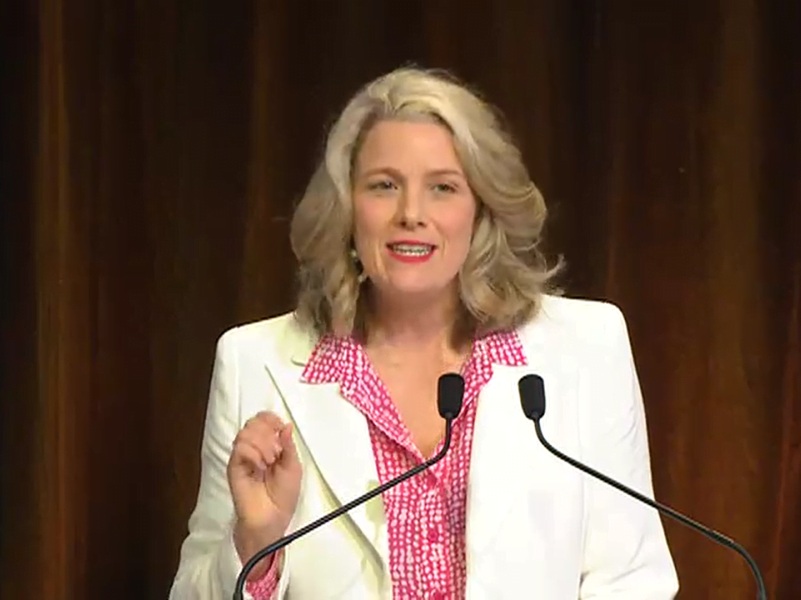The federal government has committed to opening 6,800 extra permanent migration places for workers in the tech sector among a spate of other announcements made on the final day of the Jobs and Skills Summit.
Minister for Immigration, Citizenship and Multicultural Affairs Andrew Giles also announced an additional $36.1 million would be invested in boosting the number of visa processing staff by an additional 500 workers for the next nine months.
An increase to the post study work rights for “international students who graduate from Australian universities in areas of verified skills shortage” was also announced by Minister for Education Jason Clare from the floor of the conference.

The permanent migration rate for 2022-23 will increase by 35,000 to 195,000. Of these new places, 6,100 places will help bring in the skills needed to deliver vital infrastructure across Australia and 5,000 places will be allocated to allow businesses to sponsor their employee. There are also new 4,700 places for critical healthcare workers.
An additional 11,000 places will come through the state and territory sponsored visas program while the remaining 9,000 places are for regional areas.
Minister for Home Affairs and Minister for Cyber Security Clare O’Neil said that the COVID-19 pandemic has created an opportunity for immigration reform that should be embraced. The increase in the cap will mean “thousands more workers, thousands more nurses coming into the country, thousands more engineers we so desperately need coming into the country in this financial year.”
Minister Giles said the temporary surge in visa processing staff numbers will clear the current visa backlog and support the increase to the permanent migration program.
“The backlog will be cleared. Waiting times will continue to come down. We will address this crisis, while looking to position Australia to realise our potential as a reconciled nation that harnesses the great strength of our diversity,” Minister Giles said.
Earlier in his speech, he noted that an additional 180 staff have been working on visa processing since the election in May. He also noted that around 190 staff were currently being onboarded and “up to 200 staff are working regular overtime”. In July, the median period for approving a temporary skilled visa was 42 days while the median period to approve new businesses for sponsorship is 18 days.
Speaking on the panel for “the role of skilled migration in resolving the current skills and labour shortage crisis,” Australian Chamber of Commerce and Industry chief executive Andrew McKellar welcomed the announcements.
“I very much welcome what I’ve heard from Minister O’Neil and also Minister Giles. I think the announcement today to increase the permanent migration program to 195,000 places is… a very good decision by the government, and also the measures to address the visa backlog. I think this is very encouraging to hear,” Mr McKellar said.
He also called for employer sponsored temporary and permanent migration to return to “settings that we had prior to 2017 which allowed sponsorship of all skilled occupations”. This would provide the flexibility needed to serve the shifting needs of the Australian economy, Mr McKellar said.
Transport workers union national secretary Michael Kaine suggested “an end to employer sponsorship of visa workers” in favour of industry sponsorships. This would enable workers to move between companies freely within a given industry. He described employer sponsorship as a “recipe for exploitation when your employer controls you and your paycheck because it effectively controls your passport”.
Former deputy secretary of the Department of Immigration Dr Abul Rizvi spoke from the floor as an independent expert before Minister Clare’s announcement. He noted that June/July saw the biggest surge in offshore student visa applications, more than permanent migration and the natural population increase rate.
However, he warned that this influx of international students “in the medium to long term… could be a disaster for many students who may struggle to secure skilled jobs and a pathway to permanent residence. They will be stuck in immigration limbo, particularly if there’s an economic downturn in 2023-24,” Dr Rizvi said.
In a statement, Australian Computer Society chief executive Chris Vein backed the changes to the permanent migration program.
“Immigration is part of addressing the nation’s technology workforce needs, and ACS welcomes the increased allocation of 6,800 technology workers to the skilled migration program along with streamlined visa processing to overcome the current backlogs,” Mr Vein said.
“We need to also be attracting more young Australians into the sector and provide more opportunities to workers to acquire digital skills, while building the infrastructure to enable regional Australia to participate equally in the connected, global economy.”
Do you know more? Contact James Riley via Email.


Can someone please tell me why we import people? Isn’t Australia’s education system superior? The education in other countries would be inferior? So the people from there are lower quality, right? We import lower quality? Huh? Australia is a first world country. Import from non-first world countries? Huh? Australia is an advanced technology country. Import from non-advanced countries? Buy Australian? No way – buy from somewhere else. The ACS says, “(Importing) is part of addressing the nation’s technology workforce needs”? All the words that start with Sovereign Capability must be false. All the words that start with Self Sufficiency are false? OMG, we need tech guys! Nobody could have guessed it’s 2022? Quick, import 6,800 of them. Thanks Andrew, Clare and Jason, but I think you’ve missed the point (on purpose?).